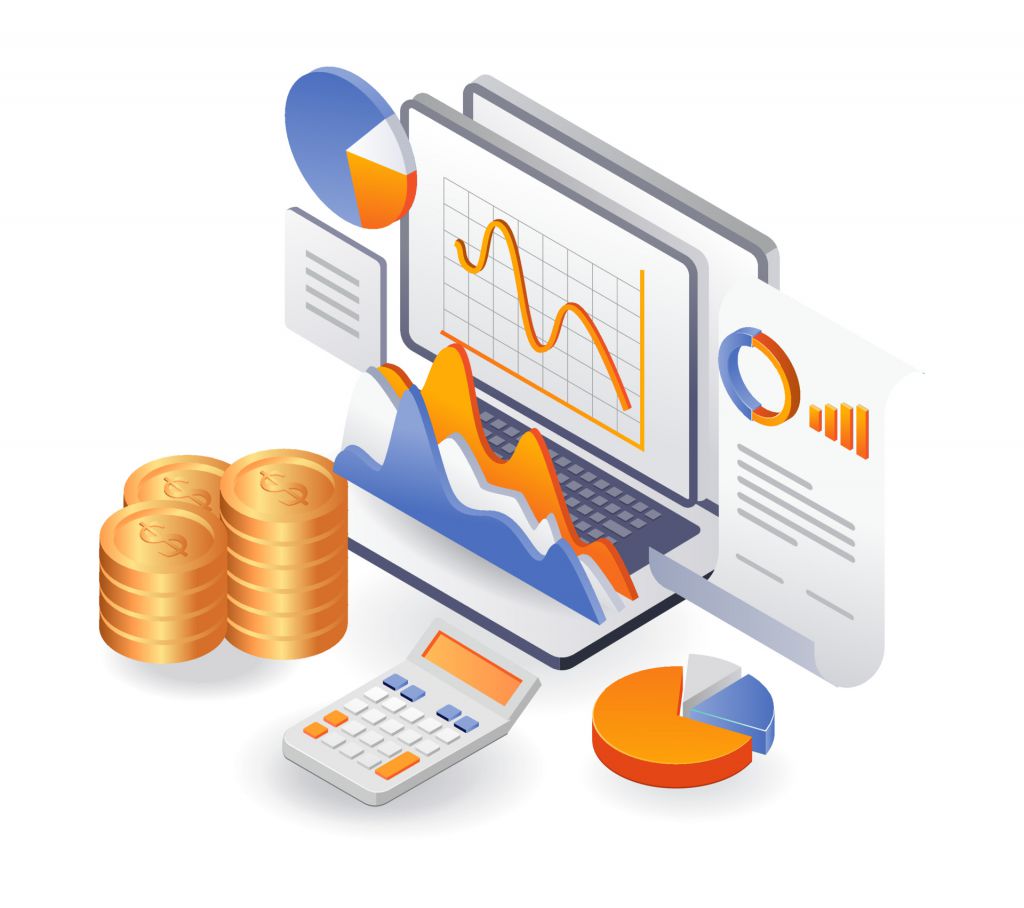


Positive Changes Accounts Payable Automation Brings To The Table
Digital processes are taking over industries at an alarming speed. They provide a ton of advantages over our conventional way of doing things. They make organizing everything easy, do things more efficiently than we do, and most of all, the human error is removed from any processes you adopt them for. AP automation is no different. It brings so much to the table.

Most companies are already trying to adopt these strategies into their company, and you want to be one of them. If you don’t know what AP automation is and are trying to find information about it, then you are at the right place. We’ll explain all the things that AP automation brings to the table. Before beginning, let’s briefly understand what AP or accounts payable automation is.
What is AP automation?
Accounts payable is the portion of the finance department that takes care of paying vendors and sellers. They handle everything related to payments regarding received goods and services. It takes a considerable time for the finance department to do everything manually. If you didn’t already guess, AP automation is the automation of this process.
In layman’s terms, after adopting the AP automation strategy, you will be paying your vendors electronically rather than doing everything on paper. This digital workflow allows your employees to focus on more important matters and takes a big load. However, it also streamlines processes and makes everything much more accessible.
Apart from symbolic advantages, you will also save a ton of money. When everything is done on paper, companies spend a considerable chunk of expenditure on stationery. Organizing and maintaining all this paper, in turn, requires more employees. So, you can not only save money that you spent buying a piece, but you can also decrease the task force as maintaining an automation system requires a few individuals. It increases efficiency by taking care of all the time wasters and money eaters. Workload distribution and paper problems are also taken care of.
How AP automation impacts different roles
AP automation plays a huge role in getting a useless load off employees. They can use that time to cover more work and make the company more efficient. In this section, we’ll be going through the impact of AP automation on essential roles in the company:
● Accounts payable managers
An accounts payable management covers every operation there is of funds payable processes. The managers are considered experts and govern the whole department’s work. Managers are at fault if your accounts payable department isn’t doing so well. When you adopt AP automation, the job of AP managers becomes less tedious. They can become better at what they’re already good at, i.e., managing the AP department. It gives the management staff these advantages:
1. Better visibility along with insights into every payment.
2. Reduced errors like duplicate payments or bounced payments.
3. 24/7 access to the payment portal to remotely perform any action they want.
4. They’ll save time on fielding status updates from vendors.
5. Tools that require less manual work
● IT managers
The accounts payable department receives a lot of visits from the IT department. Whether it is faulty machines or security risks, IT departments have some reason or the other that they need to dedicate their time and resources to the AP department.
Adopting automation strategies allows IT departments to relieve resources as maintenance of quality AP automation is rarely an occurrence. It also gives more control of the AP department to its managers.
Security is of great concern in almost every other industry. Digitization has allowed scams and frauds to be committed very quickly. A few slip-ups, and you could be the next victim. Security is an area that AP automation has advanced in already. It allows you to form positive relationships with your vendors. As every piece of information is available to you, it makes processes very smooth.
● CFO
CFO is the chief financial officer; they are an individual responsible for managing accounts payable strategies and every operation related to finance. It is a CFOs job to ensure that accounts payable is something that helps the company grow by organizing and keeping processes errorless. However, if the operations are kept manual, chances of error increase no matter how good of a strategy you adopt.
AP automation allows the CFO to monitor ongoing and past payments. In addition, it enables new revenue streams by converting to virtual cards. As a result, CFO becomes more and more efficient, allowing your company’s profit to increase.
Conclusion
Many AP automation solutions allow companies to track payment by type, payee, or vendor. This gives complete visibility into the accounts payable department. Another great thing is that adopting AP automation does not take too long. So don’t listen to rumors and talk to the experts before deciding.

AP Automation Becoming Easy
AP departments or accounts payable departments are a crucial part of a company. However, if they use conventional methods, they take up too many resources. In terms of both workforce and cost requirements, the AP department is up there. With other departments, this cost and workforce can’t be decreased because of the type of work. However, in AP, this amount can be cut to a minimum by adopting AP automation.

As the name suggests, AP automation is the automation of processes in AP, such as processing invoices, rendering payments, etc. The system is so revolutionary that every company is trying to adopt it. If a company doesn’t embrace the system in 5 years, it will surely be behind the competition. If your company is trying to adopt the approach and is researching the benefits and features of AP automation, then you are at the right place. Here’s how you can quickly adopt AP automation.
Automating your payments
The accounts payable department’s main job is to handle payments to vendors and sellers for procuring goods and services. Hence, most of the time, the AP department will be dealing with costs, and having a suitable payment method helps them out a lot. If you are still using conventional paper methods, you will be spending a good amount on managing this method. However, if you switch to electronic methods, you will be much better off. Some of the popular electronic payment methods are:
● Automated clearing house(ACH)
● Wire transfers
● Purchase cards/Company cards
● Real-time payments
● Virtual cards
If you have the proper accounts payable software, setting up the automation process could take less than 30 days. This means you will have a faster payment process with a reduced bottleneck in a month. Your AP department’s paper burdened days will be over. Security with digital trails for taxes and audits and digital security of the payments will also be there. Also, if you choose virtual cards as your payment method, which is highly recommended, you will have revenue on each payment as well.
Invoice automation
Electronic invoices are more than just “invoices in a pdf format” to remove any misconception from your mind. An invoice in a pdf format still needs to be downloaded and printed. Many people are misguided and believe that converting invoices into pdf is adopting the electronic invoice system. Manually scanning invoices and inputting data by hand cannot be considered part of automating invoices. This method also doesn’t remove the primary anomaly i.e. paper.
Invoice automation can be achieved by modern invoice software. They enable invoice automation by taking over manual processes such as scanning and processing invoices. This switch also saves you time and money because conventional methods are so costly and inefficient that they are not worth it today. Furthermore, if you factor in human error, it becomes a no-brainer. Modern software, on the other can do all the things mentioned below:
● Automatically inputs invoices into your workflow once they are received from vendors.
● This software comes integrated with 3-way matching OCR engines that you can use to eliminate errors from invoices.
● They can scan invoices with a whopping 99% accuracy, which conventional means cannot achieve.
● You reduce the risk of fraud by almost 85%.
● Remote access to status updates and approvals is available from a smartphone or a laptop with a stable internet connection.
Keeping your current processes
The best thing about AP automation is how you can keep the processes you work with. So you don’t have to throw all of it out the window. Instead, you should switch to automated systems while maintaining your current processes. Automation will eliminate the tedious parts of the plans, and you will be able to keep the practical aspects of your system as they were.
Most CFOs or chief finance officers have already sped up digital transformations in their companies as the pandemic has changed the world quite a lot, and the trend will only continue at this stage. The pandemic introduced us to remote work and how it can be more effective. Hence, to follow this trend, you need to automate processes, or the system won’t be viable. Along with keeping your current processes, you can also keep your existing bank with which you have good relations. You can transfer the bank from the old payment method to the new one.
Conclusion
The process doesn’t take much time to adapt fully, and now that you’ve seen how many advantages it can provide, you will most likely start adopting it. In addition, most experts have suggested AP automation will grow to be a $3 billion industry in 3 years, which means that right now is the perfect time to invest in it.

Digital Payments – Payment Methods Originating from AP Automation
There are many payment methods available to a company for accounts payable. Each of them has its advantages and disadvantages. When it comes to choosing one of the methods, it can be overwhelming. Researching each method and trying to apply every one of them according to your need is a very tall task and is not viable for many reasons. Deciding on a payment method is essential to businesses as vague processes could cause a lot of trouble in the future when the demand is at its peak.

Many of our problems are solved by adopting AP automation, which cuts our choices by half. Digital payments are viable with a quality AP automation system. Seeing how everything is getting digitized, this is the route your company should also go for. If you are researching the best AP payment option that you should apply for, then you’ve come to the right place. We’ll be going through the most viable digital payment options and why each is as good as the other. Before doing that, let’s first understand what part AP automation plays in all of this.
AP automation
As the name suggests, accounts payable automation is the automation of all the included processes. Accounts payable is the portion of a finance department that handles paying vendors and sellers for the received goods and services. In layman’s terms, they are the invoices from suppliers your organization hasn’t settled yet. Handling invoices, keeping track of payments, and other essential tasks are the jobs of the AP department.
Almost every industry is adopting automation of some sort. Jobs that don’t require much human inspection are already being automated to improve efficiency. AP automation is doing the same in a B2B environment. The eCommerce industry is increasing. It has become essential for companies to adopt payment methods. Why? First of all, you need a well-thought-out plan to ensure that you’re meeting the increased demand. Secondly, most companies are adopting AP automation, which is complemented by a laid-out digital payment method. If you are ahead of the competition, chances are you will grow much faster
Digital AP payment methods
In this section, we’ll go over various digital payment methods that different companies are using:
● ACH
ACH or Automated Clearing House is a method that most companies use nowadays. There are two types of ACH: Regular ACH and same-day ACH. Regular ACH is a direct payment to the vendor. However, you must remember that the price isn’t immediate; it takes three to five days to process. It is like a check but in digital form. Same-day ACH, as you might’ve guessed, allows payment on the same business day. It has a constraint, though. The price must be issued before 2:45 p.m., or it will only go out the next day.
● Wire transfers
Wire transfers come in second place as the most used payment method. Although the method is faster and easier to adopt, it is not very secure. It comes in second for incidence of fraud, and that says something. Wire transfers are adopted as it provides mobility to the users. You can issue payments sitting at your home. However, banks charge more for wire transfers than other methods like ACH. Many large firms that receive and give international transactions are the ones that use this method the most.
● Purchase cards
Purchase cards, also known as company cards, allow goods and services to be obtained without using conventional methods. Purchase cards have put old-fashioned procedures like paper checks out of use. This card is provided chiefly to trusted employees under specific guidelines to be followed. What makes this card viable is the controls that can be put on the card:
● Single-purchase dollar limits
● Monthly review and approvals of purchases by an authority greater or equal to the cardholder
● Specific merchant category modes can also be restricted
● Real-time payments
Real-time payments are the next trend and for a good reason. Studies suggest that almost one-third of the companies will roll out real-time payments in the next few years. They provide a lot of advantages like immediate fund availability and settlement finality. Apart from these, instant confirmation and integrated information flows are also reasons why companies are attracted to adopting the method. Moreover, real-time payments cost the same as other non-instant payment methods and are much lower than conventional methods.
Conclusion
AP automation has increased in the last few years. Many experts suggest the market for it may grow to over $3 billion in the next three years. Experts also suggest that digital payment methods will give companies an edge. They can quickly expect processing costs 81% lower than their counterparts and almost 70% faster-processing cycle times.

